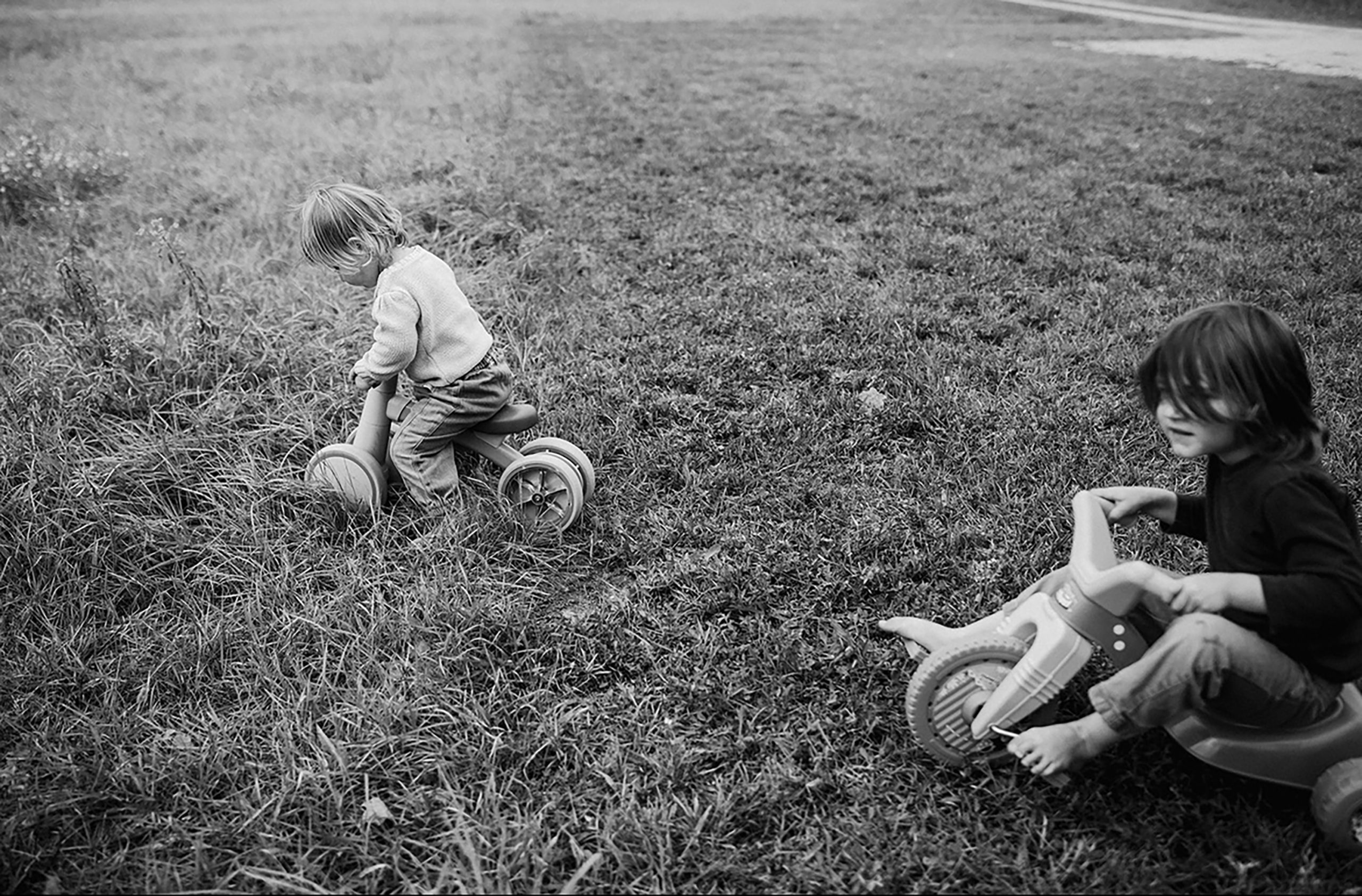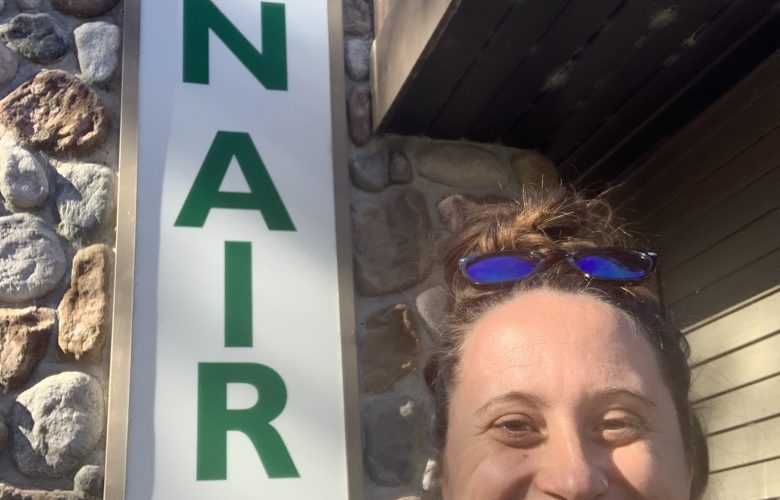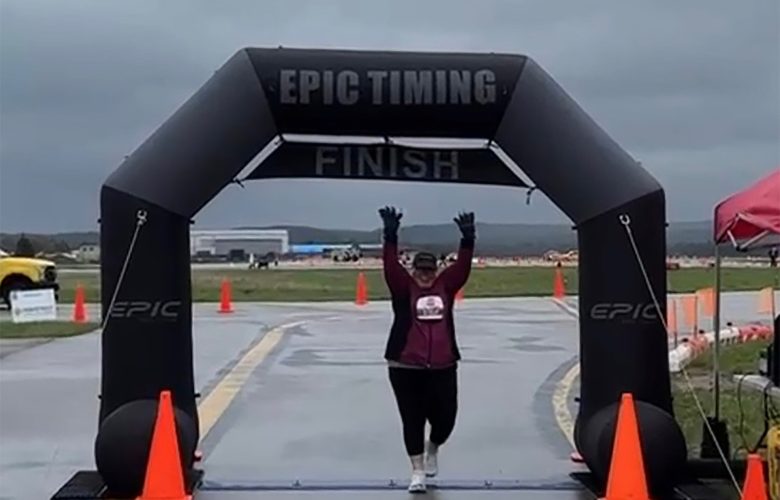An essay on neighbors and nostalgia
By Kendall Rose
Current Contributor
One evening, in the early fall of 2021, I was scrolling the Zillow website—a pastime familiar to many young people.
“Zillow Surfing” is an activity that snuck up and crept into my downtime during the pandemic slowly and quietly until, without my realizing, it had become an engrained ritual; an activity meant to comfort whatever state of discomfort we were in as new parents to two young children—whether that be a pandemic or a postpartum period or a NICU [neonatal intensive care unit] room or a housing market that was too hot to touch for nearly two years while we fit four humans into a one-bedroom, 700-square-foot cabin in Benzie County.
But on that night—when we were experiencing a period of life in which I was unsure if my family would ever know a long-term home, having transplanted to Northern Michigan—it was nostalgia that pulled me into Zillow, and toward Ravine Street in Westland, a suburb in Wayne County, my childhood home.
I scrolled over the aerial map and zoomed in on lot lines, house by house, to see what had sold in the years since I had grown up on that soft dirt road, split in half by Tonquish Creek and forever muddy, sitting in the floodplain of the Rouge River.
As I looked at the pictures and lot lines, something deeply saddening hit me.
Of 42 houses on the street, I had been inside of 39.
I knew intimately the color of the carpet in the living rooms and the wallpaper pattern in the bathrooms. I knew what pets lived in those homes and what occupations each person living there held. I knew what time they served dinner and what I could expect to eat if I was there at that time. I knew the designs on their plates and whether or not they prayed before they ate. I could remember the smell of various cigarette brands and potpourri and laundry detergent and dogs.
Halloween was not an aberration to this familiarity but an extension of it.
On Halloween night, every light on that street was illuminated, except those three homes we all didn’t visit, we all didn’t discuss—besides the folktales and folklore that we had created around them. The loot distributed was predictable every year, and we ran our street up and down alone with our neighbor friends for three hours or more on those cold, holiday nights on account of how long the driveways were, tucked back in the woods.
Halloween night reinforced the safety and comfort we all felt. We invented stories about ghosts and goblins and vampires and witches, because in real life, we felt safe.
What put a knot in my chest looking at my childhood neighborhood on Zillow was that I knew the inside of these homes. Not just the outside. The inside lives, not just the lives I could see from my yard. The furniture, and the photos on the walls, and the cat’s name.
And I knew that, no matter where we ended up moving, my kids would never, ever have that. Would never know that. And that I wouldn’t either, as an adult.
In the five years that we lived on a plot of land in an old pasture in Almira Township, I had been in none of the houses that sat adjacent to us. We were friendly with our neighbors, but not intimate. We waved, but we rarely chatted. We exchanged Christmas cards some years, but not meals. I knew I could ask them for anything and they could of us, but we would not inconvenience each other if we did not need to.
I’d never been an “adult neighbor” before this. So out of practice and unaccustomed to this culture was I that, when the young neighbor girl started showing up every single day—twice a day—while I was cleaning up after a two-year-old and breastfeeding an infant and working from home, I was so put off with the imposition that I said, “Please only come over at 4 o’clock.” I felt the need to protect my time, my space, my sanity.
I was so overwhelmed caring for my own small children that I couldn’t imagine another one showing up to my house every day and being the kind of neighbor that warmly welcomed her.
I asked my parents what it was like living on Ravine Street with all those kids. All those other lives to tend to. They said there were neighbor kids at our home every single day. If anyone was over at a mealtime, they ate. I asked if it bothered them, and they said, “Yeah, but that’s just the way it was.” I asked why no one had boundaries or rules about when and where you could come over; they said, “That’s just the way it was.” That’s how they had grown up and how their parents had grown up and probably how their parents’ parents had grown up.
I know when I look around our communities—both the physical ones and the virtual ones, the latter of which being how people seem to communicate with their neighbors more often now—it would be unlikely that my children would grow up going inside nearly all of the homes within a one-mile radius. That type of radius, a safety net cast wide at the end of the 20th century, seemed to have been permanently frayed.
Halloween was steadfast and resilient through almost every social interruption for more than a half-century. Sugar rationing in World War II. Suburbanization in the ’50s and the greater reliance on cars rather than walking neighborhoods. The introduction of high fructose corn syrup in 1965, and the banning of red dye #2 and #4 in the ’70s. The War on Drugs and the D.A.R.E era, when everyone feared candy was laced with something dangerous.
Halloween went mostly unchanged from post-WWII, from 1945, until the millennium, when—for the first time—it changed significantly in October 2001, in that it didn’t happen, falling just a few weeks after the historic event of 9/11.
We did not trick-or-treat my 11th year. We moved to a new neighborhood with new houses and new smells and no old stories or old smells or old neighbors.
By my dad’s estimation, trick-or-treating never recovered; every year, he seemed to overbuy candy, and it lived in our basement for months until it was thrown out. It was the same amount that he had bought for our much smaller neighborhood back on Ravine Street, but in this “new normal,” we had fewer and fewer kids coming to our door each year.
By 2006, our church had a well-established event known as “Trunk or Treat,” and we were encouraged to forgo our neighbors’ homes altogether for the church parking lot. To swap houses and their soft, iridescent glow for an automobile, idling and blowing carbon monoxide into the air to mix with our caramel and candy. To trade the miles we used to walk for no more than a farmed candy experience that barely required kids to break a sweat. To remove the risk and reward of being on our own and in the care of our neighbors to being monitored at all times by our parents at invitation-only events.
I don’t know how Halloween is still standing today, to be honest.
Because it truly is the only holiday that was designed to be spent among neighbors in all their idiosyncrasies—and I don’t know that most of us remember how to be a neighbor. With people needing to declare their morality to their neighbors with a yard sign. With the insistence on individual-based parenting philosophies. With deep-set fears and paranoia of the Others. With tablets for toddlers. With bent necks over a glowing apparatus that might as well be the first time in late-human evolutionary biology that we grew a new body part; our phones.
And yet, Halloween is the only holiday I still believe in. The only one I will fiercely protect for my kids. The only one I still trust to bring us together, as ephemeral as one night is. The commencement of the hosting season and of the long winter. To me, this holiday has become a nostalgic ritual, celebrating the lost art of the Open Door.
I’ll leave the light on for ya.
Featured Photo Caption: The author’s children ride bikes on the lawn at their home in Almira Township. Image courtesy of the Rose family.




